The History of Philanthropies
The first permanent organization created to raise philanthropic funds for charitable causes of The Church of Jesus Christ of Latter-day Saints came about in 1955 when the BYU Destiny Fund was launched. In 1971, the Church's First Presidency commissioned a successor organization, Church Education Development (CED). This office sought private support for the Church's institutions of higher learning, its seminary and institute programs, and its elementary and secondary school systems. In 1982, CED's name was changed to LDS Foundation. In 2019 LDS Philanthropies name was changed to Philanthropies. Since its beginnings, the mission and services of Philanthropies have been continually shaped and refined to better serve the philanthropic needs of members and friends of the Church. Many of our milestones are included below:
1971
What
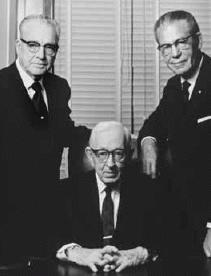
President Nathan Eldon Tanner creates a task force to address philanthropic issues in the Church. As a result of the task force's work, the Church Education Development organization is created.
Donald T. Nelson is named as Director of The Church Education Development Office.
Why
The task force is given the charge to recommend to the First Presidency the best organizational format for philanthropic work within the Church. The new organization is asked to report directly to the Commissioner of Education, Neal A. Maxwell.
The Charge to correlate prospective and actual donor contacts is given. Name clearance is implemented because various entities of the Church have been making uncorrelated requests for funds from the same people causing ill feelings with the very people we would hope to have the best feelings with.
Task force members included Neal A. Maxwell, chair; Donald T. Nelson, secretary; Ben E. Lewis and Ken Knapp, members.
1973
What
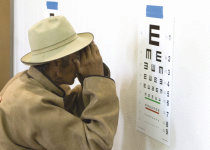
Church Education Development is renamed The Development Office of the Church.
Why
The renamed organization continues to report to the Commissioner of Education, Neal A. Maxwell. In addition to philanthropic efforts for Church educational units, the office begins development work for other Church programs:
Division of Health Services
- Hospitals
- Medical Research and Education
- Medical Services
Division of Education
- Brigham Young University
- Ricks College
- Church College of Hawaii
- Ensign College
- Elementary and Secondary Schools
- Institutes and Seminaries
Division of Special Projects
- Missionary Program
- Other Special Projects
1974
What
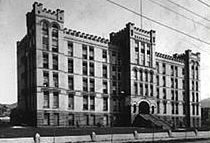
The Church divests itself of all its hospital operations.
Why
As the Church focuses more on its primary mission and purposes, development work for Church health organizations ceases.
1980
What
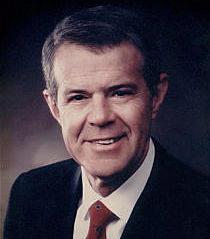
The Development Office reports to the First Quorum of the Seventy.
Why
The Development Office is asked to report directly to Elder Ronald E. Poelman, a member of the Seventy.
What
The Development Office budget methodology is changed.
Why

Prior to this time, development operations were financed from a pro-rata assessment of unrestricted dollars raised for each institution. The Church now includes the Development Office in its annual budgeting process.
1981
What
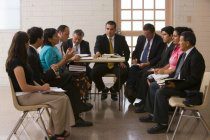
The Development Office reports indirectly to the Presiding Bishopric's office.
The Development Board is created.
Why
The Development Office is asked to report directly to J. Alan Blodgett, managing director of the Investments Department. The charge to correlate prospective and actual donor contact is re-emphasized. The name clearance concept is refined.
The board is formed to bring correlation, formal direction, and policy formation to philanthropic work within the Church. Functioning under the auspices of the board, The Gift Review Committee—which has functioned independent of any direct board supervision since 1971—is organized as the Gift Evaluation Committee.
1982
What
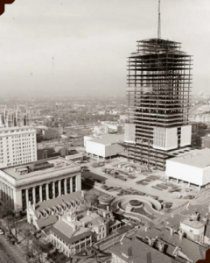
The Development Office of the Church is renamed LDS Foundation.
Why
The name "LDS Foundation" is chosen to describe the Church's philanthropic organization. Its purposes are re-clarified in a letter from Spencer W. Kimball and the First Presidency. The letter states that LDS Foundation's purpose is to "encourage and facilitate voluntary philanthropic contributions to The Church of Jesus Christ of Latter-day Saints and its related organizations and activities, with primary fundraising emphasis relating to Church institutions of higher education." The Foundation continues to report to the Presiding Bishopric through the Investments Department.
1986
What
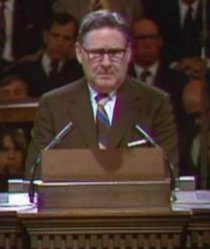
For the first time, LDS Foundation reports directly to the Presiding Bishopric.
Why
LDS Foundation is asked to report directly to the Presiding Bishop, Bishop Victor L. Brown.
1991
What

After some months of testing, the Gift Review Committee is formed by the First Presidency. The new committee is chaired by a counselor in the Presiding Bishopric, Henry B. Eyring. The LDS Foundation Gift Evaluation Committee is dissolved.
Why
The Gift Review Committee is charged with supervision, oversight, and correlation of gift acceptance (tithes as well as philanthropic) for all Church institutions and departments—including its educational institutions.
1994
What
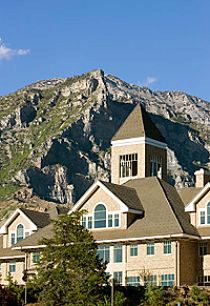
BYU's Board of Trustees approves going forward with a six-year $217 million major campaign. With the inclusion of BYU-Hawaii Campus, this goal was adjusted to $250 million.
Why
The quiet, or nucleus, phase of BYU's campaign begins. The public-phase announcement is planned for 1996, after approximately 50% of funds have been raised or committed-to by major donors. Ricks College's fundraising efforts will span five years, formally beginning in 1995.
1996
What
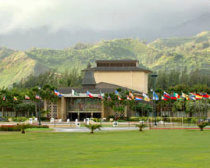
Held the "public" announcement and celebration of the BYU/BYU-H Campaign on April 11, 1996.
Why
President Gordon B. Hinckley, Elder Henry B. Eyring, with Pres. Merrill J. Bateman, Pres. Eric Shumway, campaign volunteer leaders, and major donors, announce the beginning of the public phase of the campaign with over 50% of the dollar goal either raised or pledged. KBYU-TV covered the event, as well as local Utah TV stations.
1999
What
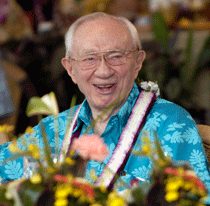
First Presidency Letter, April 12, 1999.
BYU and BYU-Hawaii complete and exceed their combined Campaign goal by 165%. Ricks College also concludes a record six-year fund raising effort.
Why
Letter sent to ecclesiastical leaders of the Church informing them of the role of LDS Foundation and Deseret Trust Company.
BYU and BYU-Hawaii's original combined campaign goal was $250 million dollars (September 1993 through August 2000). The campaign was concluded eight months early in December 1999 with a record $411.7 million dollars raised for approved priorities of which 82% were funded.. Ricks College completed their six year effort with $25.9 million dollars raised for their approved priorities of which 97 % were funded. The national average for funding featured priorities for these types of campaigns is 65% or less.
2000
What
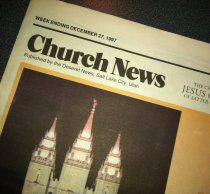
Church News article, February 5, 2000
Why
A major article (two full pages) appeared in the February 5, 2000, Church News talking about the LDS Foundation and its role to assist members and friends of the Church in making philanthropic gifts to the Church or its charities.
What
The LDS Foundation Advisory Board was approved by the First Presidency.
Why
The Development Board created in 1981 was discontinued in 1993. The Presiding Bishopric recommended to the First Presidency that an advisory board be established to correlate fund raising activities among Church charities, review fund raising priorities, recommend budget human resource allocations and review fund raising progress. Those appointed to this Board were:
- Elder Henry B. Eyring, Chair
- Bishop Richard C. Edgley, Vice Chair
- President Merrill J. Bateman, BYU
- President Eric Shumway, BYU-H
- President David Bednar, Ricks College (now BYU Idaho)
- President Stephen Woodhouse, LDSBC (now Ensign College)
- Elder L. Alden Porter, Sr. President of the Seventy
- McClain Bybee, Director of LDSF
- Roger Christensen, CES Associate Commissioner of Education Administration and Finance
What
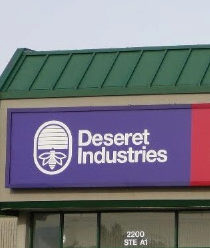
Deployment of a fundraising professional to Welfare Services Department (Deseret Industries and Humanitarian Services).
Why
In addition to the pro-active fund raising performed in behalf of the Church's institutions of higher education, LDS Foundation deployed a fund raising professional to work with corporations and individuals who have the ability to philanthropically supports humanitarian service projects world-wide.
What
A multitude of initiatives are begun to strengthen the development effort:
- Prospect correlation system enhanced.
- Deployment of selected support staff.
Why
Under the direction of the LDS Foundation Directors Council, the Directors implemented:
- The LDS Foundation Donor Correlation Committee was established to correlate, review and approve the assignment of donor prospects to donor liaisons and to track through periodic reports the initiatives that are taken to build relationships between the Church's charities and the donor prospects that will result in philanthropic donations.
- Selected LDS Foundation support staff were deployed to BYU and Ricks College to provide direct focused support:
- Communication support staff
- Donor Liaison Staff Assistants
What
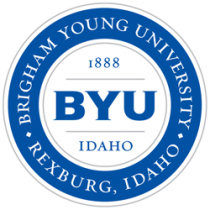
Ricks College becomes BYU-Idaho. LDS Foundation continues its fundraising support of this Church affiliated institution of higher education.
Why
Leaders of The Church of Jesus Christ of Latter-Day Saints make a historic announcement: Ricks College becomes a four-year university and takes the name Brigham Young University-Idaho. A miraculous transformation was set in motion as the campus community worked to fulfill the prophetic vision for the new university. In 2004 BYU-Idaho received accreditation at the baccalaureate level by the Northwest Association on Colleges and Universities.
2001
What

LDS Foundation begins raising financial support for the Perpetual Education Fund (PEF)
Why
In April General Conference, President Gordon B. Hinckley announces a new program, the Perpetual Education Fund, to assist in the education of returned missionaries in developing countries around the world to gain an employable skill.
2002
What

Implemented the "Donor Philanthropic Inclination Model."
Why
All fund raising cultivation and solicitation activities are to be guided by the principles of the Philanthropic Inclination Model:
"Empowers donors to freely express their philanthropic inclinations to donate their time, talents and treasure to advance the cause of the Church and its related charities, by supporting program and projects approved to receive philanthropic donations."
2003
What
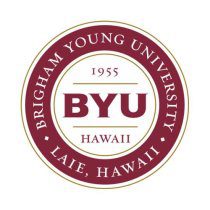
BYU-Hawaii becomes a separate institution of higher education in the LDS Church Educational System.
Why
On May 16, 2003, Elder Henry B. Eyring informs the BYU-Hawaii administration that the university now reports directly to the Board of Trustees, instead of BYU in Provo. LDS Foundation manages the combined $20 million dollar "Voyage of Faith Campaign" for BYU-Hawaii and the Polynesian Cultural Center.
What
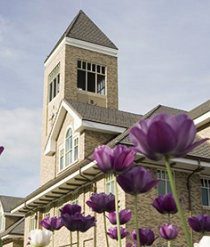
BYU establishes the "Jesse and Amanda Knight Society"
Why
The "Jesse and Amanda Knight Society" was established by BYU to recognize alumni and friends who have named the University as a beneficiary (bequest) in their personal wills or living trusts, insurance policies, etc. The Society holds a reunion on campus every year, at which time they meet with administrators, faculty and students to be updated on the exciting growth and development of the University.
2004
What
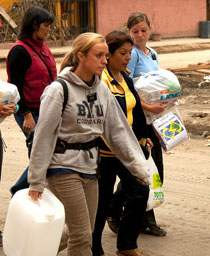
Re-confirmation of the mission and purpose of LDS Foundation as a department of the Office of the Presiding Bishopric.
Why
Under the direction of the LDS Foundation Advisory Board (chaired by Elder Henry B. Eyring) and the Presiding Bishopric, the foundational principles and processes are approved and made standards for "Fund Raising Correlation" in the Church:
Two roles of the mission of LDS Foundation:
- Assist members and friends of the Church in receiving the blessings associated with and linked to sacred covenants of giving.
- Proactively seek to invite members and friends of the Church to financially support programs and projects approved by "living oracles," thereby accelerating the "building of the kingdom."
Governing principles of LDS Foundation
- Empowers donors to freely express their philanthropic inclinations to donate their time, talents and treasure to advance the cause of the Church and its related charities by financially supporting programs and projects (fundraising priorities) approved by "living oracles".
- Empower donor liaisons
What
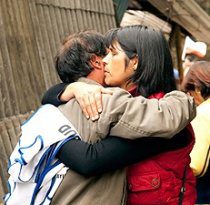
LDS Foundation responds to the emergency relief of the victims of the South East Asia Tsunami.
Why
LDS Foundation assists in facilitating donations from members and friends of the LDS Church worldwide for emergency relief of the victims of the South-East Asia Tsunami. For the first time in history, many of these donations were made over the Internet.
2005
What

LDS Foundation becomes LDS Philanthropies.
Why
The First Presidency renames LDS Foundation. The new name is LDS Philanthropies, in as much as this department of the Office of the Presiding Bishopric serves ALL Church affiliated charities.
2007
What

Church provides a new online "Donor Advised Fund" for members and friends of the Church
Why
The Church of Jesus Christ of Latter-day Saints creates a new online "Donor Advised Fund" for members and friends of the Church and its affiliated charities. The fund is managed by Deseret Trust Company with the support and partnership of LDS Philanthropies.
2008
What
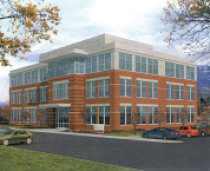
LDS Philanthropies receives a new "home" for its employees.
Why
A new office facility to house LDS Philanthropies, built by the Office of the Presiding Bishopric in Provo, UT, was dedicated by President Henry B. Eyring, First Counselor in the First Presidency of the Church on May 16, 2008.
2019
What
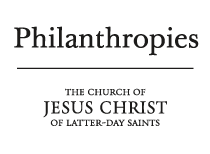
LDS Philanthropies becomes The Church of Jesus Christ of Latter-day Saints – Philanthropies.
Why
President Nelson stated: “The Lord has impressed upon my mind the importance of the name He has revealed for His Church, even The Church of Jesus Christ of Latter-day Saints. We have work before us to bring ourselves in harmony with His will. In recent weeks, various Church leaders and departments have initiated the necessary steps to do so.” To align with President Nelson’s direction, LDS Philanthropies is now renamed The Church of Jesus Christ of Latter-day Saints – Philanthropies, or less formally as the Philanthropies Department of The Church of Jesus Christ of Latter-day Saints, or following the first full reference to our name, simply Philanthropies.